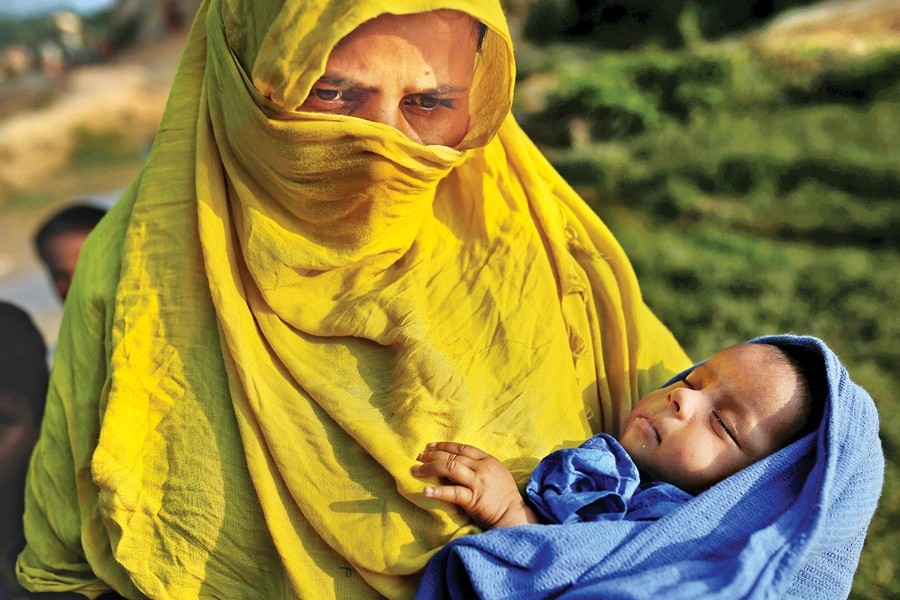Rohingya children who have fled Myanmar to Bangladesh are suffering from acute malnutrition and anaemia, UNICEF said.
According to three health and nutrition surveys conducted between October 22 and November 27 in refugee camps and makeshift settlements, up to 25 per cent of children under the age of five are suffering from acute malnutrition, far exceeding the WHO emergency threshold of 15 per cent.
Nearly half the children surveyed have anaemia, up to 40 per cent have diarrhoea, and up to 60 per cent have acute respiratory infections, according to a UNB report.
"We now have a comprehensive picture of the nutritional status of Rohingya children in Cox's Bazar and unfortunately, our worst fears have been confirmed," UNICEF Bangladesh Representative Edouard Beigbeder said on Friday.
"Refugee children who have already endured unimaginable suffering in fleeing their homes are now facing a public health crisis," said the UNICEF official.
The surveys covered the refugee camps of Kutupalong and Nayapara and informal settlements in Ukhia and Teknaf, and included a sample size of more than 1,700 newly arrived refugee children as well as already registered refugee children. Its findings include:
One in four children in Kutupalong are acutely malnourished, nearly half are anemic, 40 per cent have diarrhoea and more than half have acute respiratory infections.
Among newly arrived children in Nayapara camp, 16 per cent are malnourished, close to 50 per cent are anemic, 40 per cent have diarrhoea and 1 in 2 have acute respiratory infections.
In the makeshift and informal settlements, 1 in 5 children is malnourished, almost 1 in 2 has anaemia, 2 in 5 have diarrhoea, and close to 3 in 5 suffer from acute respiratory infections.
The nutrition crisis is most pronounced in Kutupalong refugee camp and the makeshift settlements which have both the highest rates of acute malnutrition and the largest number of newly arrived Rohingya refugees.
Severe acute malnutrition rates are highest in Kutupalong at 7.5 per cent, followed by 3 per cent in the makeshift settlements and 1.3 per cent in the Nayapara refugee camp.


